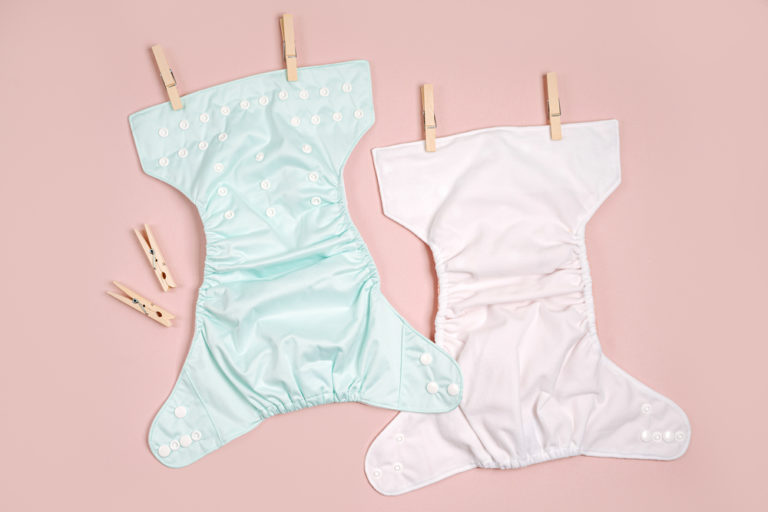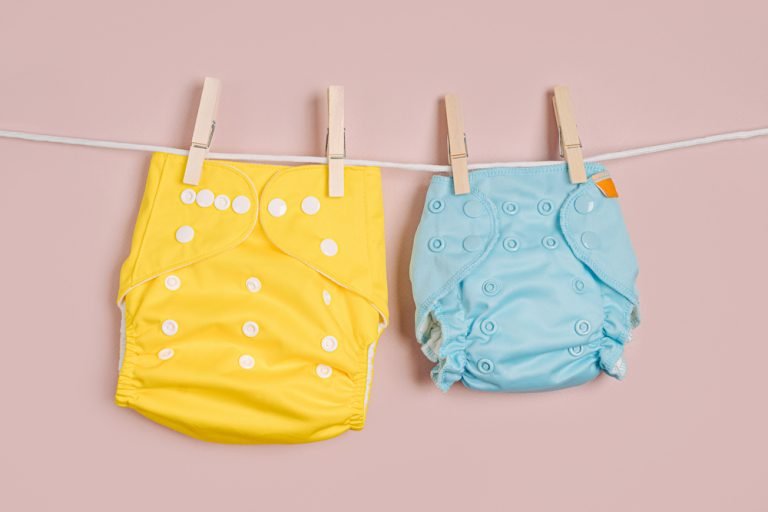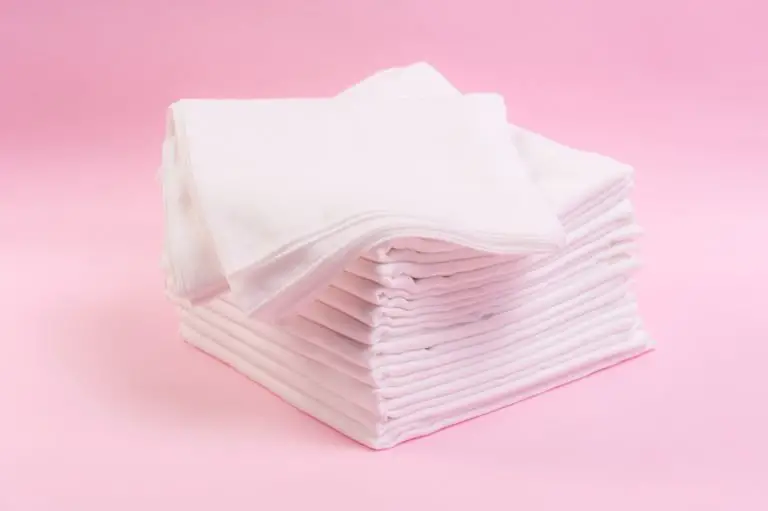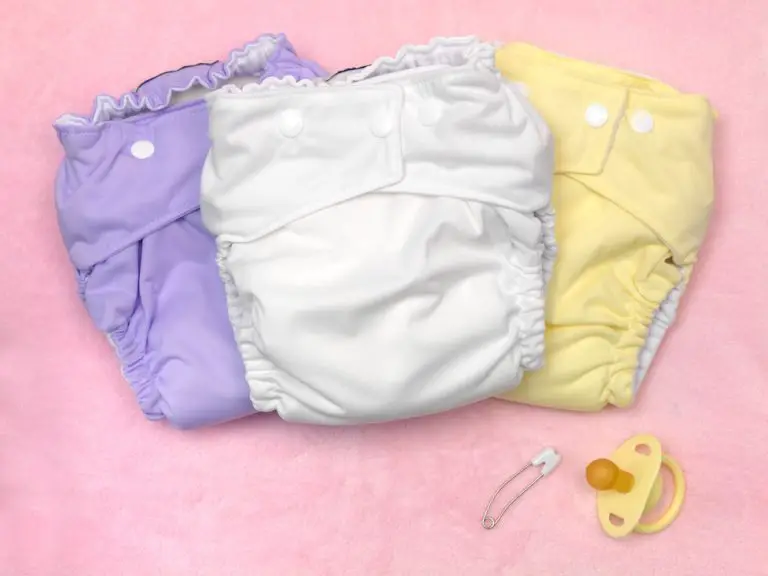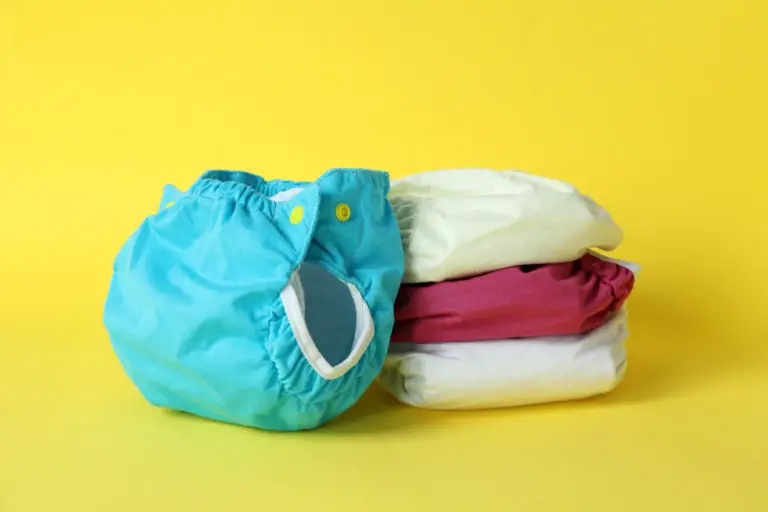Nylon Fabric: Properties, Pricing & Sustainability (2024)
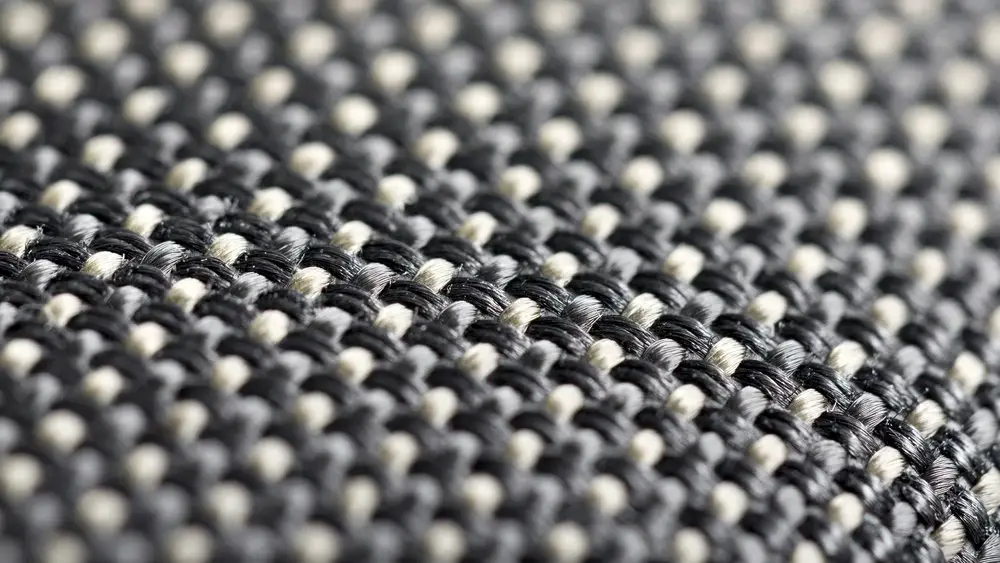
Nylon fabric is the descendant or little sister of rayon. The DuPont company, in the 1930s, first manufactured nylon. When it came out, nylon was a revolutionary fabric and was marketed as the “first man-made organic textile that was as strong as steel.” Nylon quickly took off and today is used in a wide variety of textiles and products.
Fabric Profile
Fabric Name: Nylon
Synonyms: Polyamide, Polymer fabric, Rayon
Fiber Type: Synthetic
Breathability: Not breathable
Absorbency: Highly water-resistant
Characteristics: Repels water, not absorbent, not breathable, durable, stretchy
Washing Requirements: Handwash or wash on delicate
Common Uses: Fabric and clothing, cookware, plastic fasteners, and machine parts
Heat Press Temperature: Low heat and dry without steam; 275 degrees max
- What is Nylon?
- Types of Nylon Fabric
- Nylon Fabric Characteristics
- Downsides of Nylon Fabric
- Common Uses of Nylon Fabric
- Nylon Fabric Pricing
- How is Nylon Made?
- Where is Nylon Manufactured?
- Nylon Fabric Environmental Impact
- Nylon Fabric Certifications
- History of Nylon Fabric
- Nylon Fabric Alternatives
What is Nylon Fabric?
Nylon material is a synthetic polymer that is characterized by its water-repelling ability and stretchiness. Waterproof nylon fabric was first used to make parachutes as an alternative to silk and hemp during World War II.
Although its original use was intended for home goods and fabrics because of the fantastic nylon fabric properties, it quickly became a popular textile in the industrial world.
Nylon fabrics are 100% synthetic and contain no natural fibers and materials. As a result, nylon by itself is prone to tears, rips, and breaking down; however, when blended with other synthetics such as spandex, polyester, and cotton, the positive nylon fabric qualities stood out, and the textile became more widely used.
Today, nylon fabric is used to make all types of domestic and industrial goods such as toothbrushes, umbrellas, watch bands, and clothing, including jackets, stockings, and workout clothing. In addition, because of the durable characteristics of nylon or nylon resin, it is also commonly found in machine parts.
Nylon vs. Polyester vs. Polypropylene
Nylon and polyester are both synthetic fibers that are manufactured through a chemical process. At their essence, both are plastics and have similar properties and uses. There are some differences, however.
Nylon is more lightweight than polyester, making it easier to use and wear; it is also the more durable and stronger of the two fabrics. However, on the flip side, nylon is less resistant to heat, and while both fabrics are usually easy to wash, nylon may require hand washing.
Nylon and polypropylene are essentially the same textile but have a slightly different chemical structure, giving them different characteristics to a varying degree.
Both textiles are extraordinarily durable and stress-resistant, but polypropylene has the edge in strength. In addition to being able to withstand extreme stress, it is also resistant to wear and tear from sun damage, mold, corrosion, bacteria, rot, and other oils.
A significant difference between the two is that polypropylene is less resistant to heat than nylon making it stretchier and more manageable to mold.
Types of Nylon Fabric
There are several different types of nylon fabric which are all named with a numeral or alphabetical suffix. For example, there are Nylon 6, Nylon 6.6, Nylon 1.6, Nylon 510, Nylon 46, and Nylon MXD6. These different nylon textiles have different characteristics and uses, ranging from clothing and garments to plastic manufacturing parts.
Nylon 6
Nylon 6 is the most widely used type of nylon. To create Nylon 6, the polymers are melt-spun at 250-260 degrees celsius and turned into fibers. Nylon 6 is most closely related to Nylon 6.6, and the two share some common uses and applications. However, nylon 6 is least likely to be used in the industrial setting because it has the lowest heat resistance.
However, one of the nylon fabric qualities that Nylon 6 possesses is low friction making it an excellent choice to replace both rubber and metal parts in machinery. It is also one of the types of Nylon used to make fabric. For example, Nylon 6 is often used to manufacture hosiery, chiffon, organza, toothbrush bristles, heavy-duty fabric, and cords.
Nylon 6.6
Nylon 6.6 is considered the next generation of Nylon 6. While it possesses, in some applications, several advantages over Nylon 6, both are quite useful and prevalent. Nyon 6.6 could be considered high-quality nylon because it is more resistant to heat, has a lower water absorption rate, and has better resistance to chemicals and acids.
One of the primary uses of Nylon 6.6 is the production of nylon clothing material and garments, specifically high-performance sportswear and industrial workwear such as firefighting suits and construction garments. In addition, it is commonly used in parachutes, airbags, and carpet fibers in the industrial sphere.
Nylon 1.6
Nylon 1.6 is formed through a different chemical process than Nylon 6 and Nylon 6.6. The main components of Nylon 1.6 are adiponitrile, formaldehyde, and water and first created by DuPont in the 1950s. It initially was considered a less stable version of Nylon because it melted much easier. However, on the flip side, Nylon 1.6 is much more absorbent than its predecessors.
Nylon 1.6 is not commonly used in clothing or fabric textiles but is more likely to be found in the industrial sector in wires, strings, tubing, yarn, filament, and other flexible materials.
Nylon 510
Nylon 510, developed by DuPont, was initially intended to be a replacement for Nylon 6.6 due to many of its superior qualities. Unfortunately for the company, it turned out to have much higher production costs and could not be mass-produced on the same levels of Nylon 6 and Nylon 6.6.
Nylon 510’s primary uses are in the industrial and scientific sectors in the manufacturing of machinery parts. However, one mainstream use of Nylon 510 is in the production of oven bags due to its ability to withstand high temperatures.
Nylon 46
Much like Nylon 1.6 and Nylon 510, Nylon 46 is a lesser-known cousin in the nylon family and is mainly used for industrial purposes. Nylon 46 is so uncommon it is only produced by one company, DSM, under the brand name Stanyl. Nylon 46 or Stanyl is known for its ability to stay stiff and hold its shape and is incredibly resistant to chemicals and oils. It also has remarkably high heat resistance.
Due to these durable characteristics, Nylon 46 is widely used in engines and mechanical parts, gears, fasteners, and in areas of high friction or abrasion.
Nylon MXD6
Nylon MXD6 is a type of nylon manufactured by Mitsubishi Gas and Chemical Co. Ltd. Compared to the more commonly known and used Nylon 6 and 6.6, this type of nylon is more robust and elastic.
In addition, nylon MXD6 also molds and shapes easier, has lower water absorption, and has better gas-barrier properties. In laymen’s terms, this makes Nylon MXD6 versatile in packaging and molding materials.
There are different grades of Nylon MXD6 with varying viscosity, strength, and flexibility. Nylon MXD6 is also widely used in manufacturing medical equipment such as catheters, blood collecting equipment, and medical containment systems.
Nylon Fabrics Characteristics
The main characteristics of Nylon fabric include durability, strength, water resistance, and its ability to hold its shapes.
Nylon is a highly versatile textile with applications across the board in everything from clothing to mechanical equipment. The type and composition of the nylon determine the areas it is commonly used.
Another significant characteristics of nylon garments are their long-lasting propensity. For example, nylon clothing and textiles blended with spandex and cotton often last a long time and may only show minor wear and tear under normal, prescribed use.
Nylon’s water resistance also means that it pushes water to the surface, making it a quick-drying fabric. Thus it is a popular choice for sports and athletic wear.
Overall, nylon is an inexpensive fabric to manufacture, particularly the more common Nylon 6 and Nylon 6.6. Therefore it is a commonly sought textile in the fabric world for durable, long-lasting products like carpets, jackets, and upholstery.
Downsides of Nylon Fabric
Nylon fabric uses are wide and varied, but it does have some drawbacks despite the textile’s popularity. One of the main drawbacks to nylon is its tendency to warp or discolor based on environmental factors.
For example, it melts when exposed to high temperatures, it can shrink when exposed to too much moisture, it lacks resistance to UV rays, and it will become yellow and fragile with too much exposure.
Even though nylon is lightweight and breathable, which is why it is commonly blended with spandex for exercise garments, it is not breathable; therefore, it traps in odors and sweat.
Additionally, if nylon becomes too wet and isn’t properly dried, it has a propensity to shrink. Nylon is also highly prone to static, making it uncomfortable to wear or insurable in some electronic applications.
Nylon fabric and textiles often have very specific washing and drying instructions in order to prevent shrinkage or heat damage.
Common Uses of Nylon Fabric
Nylon has been around since the mid-1930s and since then has grown in popularity and usage. Water-resistant nylon is commonly used to make umbrellas, jackets, netting, luggage, and life vests.
Nylon fabric is probably most commonly known as the fabric hosiery and stockings are made from, but it is actually used quite widely in clothing. Other clothing that commonly contains nylon is dress socks, slacks, swimwear, shorts, windbreakers, military and combat uniforms, activewear, and track pants.
Nylon is also extensively used in the making of rope. Due to nylon fabric durability and strength, it is a popular rope used on boats for docking and towing. In addition, nylon is a standard textile found in threads, again due to it being lightweight and robust.
Other common nylon uses are finishing lines, yarns, carpets, parachutes, gears, brush bristles, waterproof diaper pants, and sports equipment. Less common applications of nylon include electronics, machinery parts, and medical equipment and supplies.
Nylon Use in Cloth Diapers
You can find nylon amongst the cloth diapering world in waterproof diaper covers and pants. Some parents favor nylon because it will outlast rubber, plastic, and vinyl pants. That’s because rubber, plastic, and vinyl are all prone to cracking and becoming brittle.
While not known for being an exceptionally breathable fabric, Nylon is more breathable than plastic or rubber. You can machine wash and dry nylon diaper covers in most instances, which isn’t always the case with other fabrics. Nylon is also more lightweight, which means less weight your baby has to carry around on their bottom.
Some parents have mentioned one downside: nylon pants make noise; think of the traditional nylon track pants “swish” noise.
The downside for some parents is that nylon covers are a synthetic material and a petroleum-based product and therefore have a more significant environmental impact than natural fibers like wool, bamboo, or hemp.
Nylon Fabric Pricing
Nylong fabric prices can vary greatly depending on the type of nylon, the nylon fabric weight, nylon fabric quality, and nylon fabric color. Nylon fabric pricing is also affected by production capacity; like many other products during the COVID, pandemic nylon saw a decrease in production and an uptick in overall costs.
Nylon is a popular fabric for carpeting and can cost anywhere from $8 to $45 per square foot. Therefore, it is generally cheaper than polyester carpeting which usually costs about $8 to $22 per square foot. Still, polyester is the better choice for in-home use because, unlike nylon, it is stain-resistant.
When pricing nylon fabric by the yard for sewing projects, it can cost anywhere from $1.99 for nylon tulle to $11.99 for nylon and spandex blend. The cost is even higher for nylon fabric texture embroidered, eyelash lace, or embellished in some other way. These texturized fabrics can cost up to $30 per yard.
How is Nylon Made?
100% nylon is a synthetic material made through a series of chemical reactions between diamine acid and adipic acid. This substance is then melted to form a molten liquid which is then put through a spinneret and turned into fibers that can be woven.
While some materials and fabrics consist of only nylon, in many instances, it is combined or blended with other fabrics to create mixed textiles that have more appealing characteristics.
Nylon fabric is spun into different deniers or weights, or thicknesses. Deniers are the standard measurement for nylon. A pair of nylon stockings, for example, maybe 15 deniers. The higher the deniers, the thicker and stronger the nylon thread used to make the product.
Nylon at its core is thermoplastic making it susceptible to heat. But, since it is finely spun and then woven plastic, it is incredibly durable and robust and can resist many natural elements such as mold and fungi, and is waterproof.
Where is Nylon Manufactured?
Nylon is manufactured around the world, primarily on three continents: North America, South America, and Asia. The United States and Brazil are two primary nylon producers in the western hemisphere, while India, Pakistan, and China cover the eastern half.
Nylon was originally produced in the United States by the DuPont company and remained the primary manufacturer of Nylon until the 1980s. Then, because of changes in the global economy and the cost of production overseas, many companies began manufacturing their goods in China, nylon among them.
Since that time, other Asian countries have joined in producing the fabric, including India, Pakistan, and Indonesia.
Worldwide, the production of nylon is decreasing as the fabric is less and less in demand. While it is still used primarily for sports equipment and stockings, the textile is often blended with other fabrics to increase longevity and durability, reducing the need for nylon in the large quantities of the past.
Nylon Fabric Environmental Impact
Like all other synthetic fabrics, nylon has a more significant negative impact on the environment than natural fibers. The majority of nylon is made via crude oil. The manufacturing of nylon and the harnessing of crude oil negatively impact the environment by polluting the air, water, and ecosystems in the surrounding area.
The greenhouse gas, nitrous oxide, created during the nylon manufacturing process is 300 times worse for the atmosphere than carbon dioxide.
Nylon production also requires large quantities of water and energy, and as a synthetic material, it is not biodegradable. In addition, it is estimated that synthetic materials like nylon will take hundreds of years to break down.
One upside to nylon is that some types of nylon are recyclable; unfortunately, that fact is not widely known, and many recycling plants may not accept the textile. One company, Swedish Stockings, is trying to change that and has created a stocking recycling program in an effort to reduce nylon waste.
Nylon Fabric Certifications
Nylon currently does not have any certifications that can be awarded. As it is not a natural product, it is not eligible for organic or all-natural certifications like other fabrics such as cotton or bamboo. Furthermore, even if nylon is blended with a natural or organic fabric, it cannot receive a related certification as it still possesses synthetic materials.
Nylon products do have specific standards that they must meet depending on what type of product they are. For example, food containers containing nylon must pass tests showing resistance to oxygen, carbon dioxide, and other gasses. In addition, the FDA has a list of specifications that nylon products must meet if they are designed to come into contact with food.
There are also different nylon grades, and the different grades must pass specific chemical and specification tests and standards before being approved. These standards are based on the indeed use of each grade of nylon.
History of Nylon Fabric
Nylon fabric history began in the United States in the 1930s. The DuPont corporation developed the first type of nylon in 1935 by Wallace Hume Carothers, the same scientist who led the team that invented neoprene a few years prior.
Nylon received its first patent in 1938, and DuPont quickly began advertising the product as a replacement for silk stockings that were stronger and more durable.
Nylon was part of the 1939 World’s Fair in New York City, and in May of 1940, nylon stocks were finally available in stores for public sale. During the 1940s and the height of World War II, nylon was seen as a practical patriotic choice over silk products from Japan.
During nylon’s first year on the market, between 1940 and 1941, Americans purchased sixty-four million pairs of stockings.
Nylon quickly took off and today is one of the most versatile textiles available. It is used in everything from clothing to carpeting, to machinery, medical supplies, and more.
Nylon Fabric Alternatives
The most apparent nylon alternative is silk since nylon was first manufactured and sold as a silk replacement. Silk is more costly than nylon, but it is a natural and biodegradable material and is overall much better for the environment.
Polyester and acrylic are two synthetic fabrics comparable to nylon. All three fabrics have a tendency to trap heat and are typically not very breathable, but they are relatively wrinkle-resistant and hold their shape well.
In addition, nylon has a slight edge on polyester and acrylic because you can recycle some types. Therefore, recyclable nylon is an excellent alternative to its forefather traditional petroleum-based nylon.
Econyl and EcoRib are two textiles manufactured from recycled nylon and nylon scraps. Both fabrics are excellent choices for swimwear and are considered sustainable fabrics.
Another option is Bio-Nylon which is plant-based and renewable. Unlike traditional nylon, Bio-Nylon does not contain any plastic, and it is biodegradable.
FAQ
What is nylon fabric best for?
Nylon is best suited for athletic wear, sporting goods, and nylons because of its flexibility, durability, and water resistance.
What is nylon made of?
Nylon is a synthetic fiber that is made using fossil fuels. Specifically, it is made from diamine acid and adipic acids.
Is nylon a natural fiber?
While nylon is made from a natural resource, fossil fuels, it is not a natural fiber because it must be chemically created in a lab.
Is nylon a breathable fabric?
Nylon fabric is not characterized by its breathability. It is known to trap in sweat and heat.
Is nylon cooler than cotton?
No nylon is not cooler than cotton. While nylon is lightweight, cotton is a natural fabric that is very breathable and lightweight.
Does nylon hold smell?
Yes, nylon tends to hold in odors, mainly because it traps in sweat. However, in most instances, nylon is easy to wash.
Does nylon feel like cotton?
No, nylon does not feel like cotton. Nylon feels more like silk or rayon. However, nylon could be blended with cotton in some garments.
Is nylon a cheap fabric?
Nylon is considered a reasonably inexpensive fabric, although it will depend on the quality, weight, and embellishments added.
Is polyester stronger than nylon?
The two fabrics are both strong and durable, but nylon is the stronger of the two. Nylon is also more flexible and stretchier.
Is nylon clothing toxic?
Nylon itself is not toxic; however, the process it takes to manufacture nylon releases several chemicals and greenhouse gases into the environment.
Is nylon eco-friendly?
No nylon is not considered eco-friendly. It uses an unsustainable resource, fossil fuels, to create, and its manufacturing process is known to pollute air, land, and water.
Why is nylon considered a low-maintenance fiber?
Nylon is considered low-maintenance because it is not prone to wrinkles, it is easy to wash, and when needed, you can iron it on very low heat.

Laurel Davidson
Laurel brings her passion for parenting and years of problem-solving experiences to ParentingMode. She is the editor of ParentingMode, ensuring that the content is relevant and valuable to the readers. Laurel received her master’s degree in public administration with a certificate in economic development. She is a stay-at-home mom, raising two adorable kiddos, Aurora and Thomas. Laurel enjoys sharing her experience as a parent, traveling, and good food.


